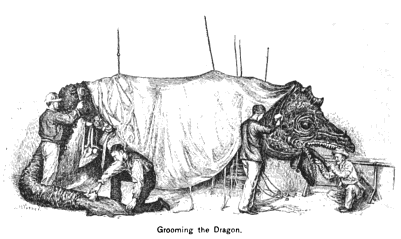The following article, by Eugene Kinkead and Russell Maloney, first appeared in The New Yorker in 1937:
“You Can’t Take it With You,” Moss Hart’s and George Kaufman’s play about that mad Morningside Heights family, the Sycamores, recently established a theatrical record by putting seats on sale eighteen weeks in advance. Also, it probably holds some kind of record for the number and complexity of its props; all in all, there are about seven hundred props, requiring the attention of three property men instead of the customary one. “We have more props than ‘White Horse Inn,'” the head prop man, Al Burkhardt, told us when we went backstage to investigate. As we probably need not tell you, the play has only one set, which represents the living room of the Sycamores’ apartment. First thing you notice is the magazines scattered here and there in corners. There are about three hundred and fifty of them—1929 Navy-Princeton football programs, and back numbers of Review of Reviews, Magazine of Wall Street, New York Masonic Outlook, and other conservative publications; nothing exciting, like The New Yorker, because that might distract from the actors.
The three snakes in a solarium are mechanical ones; Al Burkhardt works them from backstage, by means of a lever. The flies, brought on in a bottle to be fed to the snakes, used to be fishing flies from Davega’s; now, for some reason, they’re raisins. The letters scattered about, some of which Grandpop reads aloud, are mostly letters from hotels, soliciting the patronage of the “Of Thee I Sing” company when it was going on tour. The wastepaper basket is filled mostly with crumpled-up jottings made by Mr. Kaufman during rehearsal. We fished out one of the sheets, and found it covered with vague but stimulating phrases: “Stamp scene messy—Penny’s red beret—You, too, can take the pimples off your face—He will get them yet if they do not get him—go right into pirouette.” The fern in the bay window of the set is a fake. The cornflakes are real. Among the “atmosphere props” (things that aren’t handled) are a Filipino fly whip, a key to the City of Buffalo, a hundred-year-old string of wampum, a palette left behind by Donald Oenslager (who designed the set), a tusk of ivory, and a real hand-carved African war shield. The ship model that hangs from the ceiling cost $100, but this is offset by Mr. Oenslager’s good luck in picking up, for a song, a print that turned out to be a Piranesi, worth $150. If there’s anything left of it by the time the play closes. The two kittens who appear in the first act come from the Medor Kennels; they are brought and called for every night by a man named Samuel. They have to be replaced every two weeks, because they have to be small kittens.
One of the hardest things to acquire was a Meccano model of a ship, called Queen Mary in the play. Originally, they had a model of the Empire State Building, with the line “I christen thee ‘Empire State,’ and I wouldn’t be in your shoes for anything.” The present gag, with the ship, is “This is the Queen Mary.” “No. She hasn’t got the right hat on.” Well, the stagehand who was assigned the job of finding a Meccano Queen Mary scoured New York for a week, without success. Finally he thought of telegraphing the Meccanno factory at New Haven, and they sent him just what he wanted. He rushed up to Mr. Kaufman at rehearsal with the thing, and said, “L-look, M-mr. K-k-kaufman.” (We forgot to tell you he stuttered.) Unable to get any further with that sentence, he pointed at the model and said, “F-from, f-from N-new Haven.” “Did you run all the way?” asked Mr. Kaufman.
Originally published in The New Yorker, February 13, 1937, written by Eugene Kinkead and Russell Maloney.

